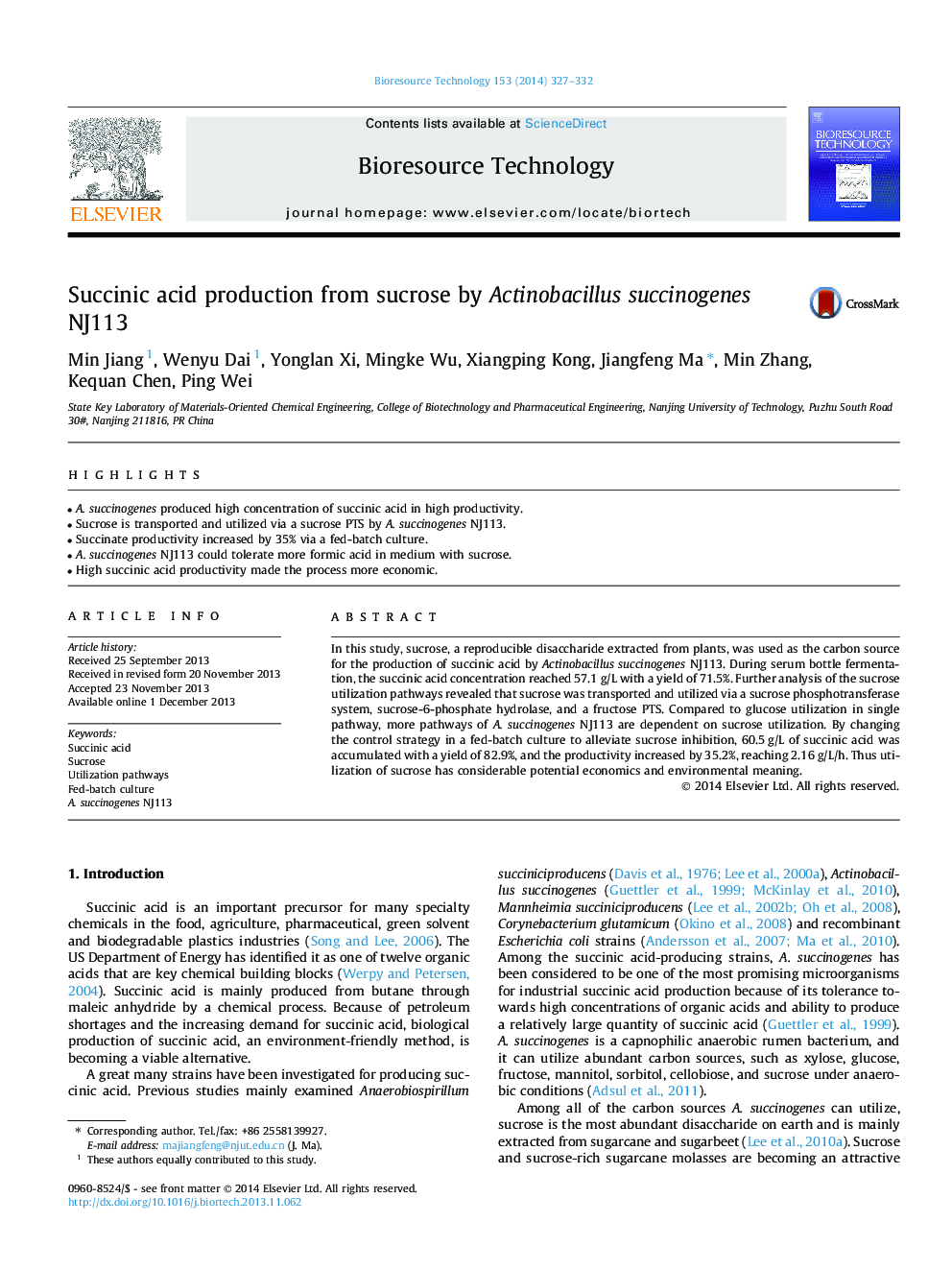| Article ID | Journal | Published Year | Pages | File Type |
|---|---|---|---|---|
| 680762 | Bioresource Technology | 2014 | 6 Pages |
•A. succinogenes produced high concentration of succinic acid in high productivity.•Sucrose is transported and utilized via a sucrose PTS by A. succinogenes NJ113.•Succinate productivity increased by 35% via a fed-batch culture.•A. succinogenes NJ113 could tolerate more formic acid in medium with sucrose.•High succinic acid productivity made the process more economic.
In this study, sucrose, a reproducible disaccharide extracted from plants, was used as the carbon source for the production of succinic acid by Actinobacillus succinogenes NJ113. During serum bottle fermentation, the succinic acid concentration reached 57.1 g/L with a yield of 71.5%. Further analysis of the sucrose utilization pathways revealed that sucrose was transported and utilized via a sucrose phosphotransferase system, sucrose-6-phosphate hydrolase, and a fructose PTS. Compared to glucose utilization in single pathway, more pathways of A. succinogenes NJ113 are dependent on sucrose utilization. By changing the control strategy in a fed-batch culture to alleviate sucrose inhibition, 60.5 g/L of succinic acid was accumulated with a yield of 82.9%, and the productivity increased by 35.2%, reaching 2.16 g/L/h. Thus utilization of sucrose has considerable potential economics and environmental meaning.
